#are we migrating like birds during the spring ??
Explore tagged Tumblr posts
Text
why am i seeing marauders fan posting about those gay boys playing that american gay sport ???
is it good ? should i read it ??
#are we migrating like birds during the spring ??#marauders#jegulus#regulus black#james potter#sunseeker#starchaser#aftg
39 notes
·
View notes
Text
"Fears that Nebraska’s annual spring migration of sandhill cranes could be the avian equivalent of a “superspreader” event have been completely abated, as a record-setting stopover in Nebraska of thousands of birds was enjoyed without any sign of a bird flu outbreak.
Three-quarters of a million cranes migrating north to their spring habitat landed in the Platte River in Nebraska. The number is deemed an underestimation, but you try counting more than 700,000 birds.
Fears that the highly contagious new strain of bird flu H5N1 could carry over to the cranes from livestock have been assuaged as the birds are beginning to move off again without a single dead crane being observed, local news reports.
Aside from the mini celebration of bird flu’s absence, the real celebration—that this year was the largest on-record for the sandhill crane migration—can begin.
The official estimate of 738,000 animals was made during aerial surveys by the Crane Trust, a nonprofit whose raison d’etre is to protect these magnificent birds and this unforgettable spectacle.

Pictured: Crane migration in Nebraska
These cranes have been visiting an 80-mile-long stretch of the Platte River, braided in some sections, for 9 million years, which these days lies between the towns of Chapman and Overton, Nebraska.
“What makes the central Platte River valley attractive to sandhill cranes is the river that we help manage,” says Matt Urbanski, a spokesman for the Crane Trust, to KSNB’s Madison Smith. “We will make sure that there’s not a ton of vegetation choking the river out. We’ll make sure that it can widen, so the sandhill cranes have six to eight inches of water to sit in during the nighttime.”
The sandhill crane stands between 3 and 4 feet tall, and is easily identifiable for its crown of red feathers and their rattling bugle-like call. It is one of only 2 species of crane that live in North America...
Interestingly, though the cranes have visited this site for eons, they did so even before there was a river there. Additionally, they now spend much of their time feeding on spare corn kernels leftover from nearby harvests, and spend the night standing in the water where they’re safe from predators.
Arrivals and departures are staggered over several weeks, but at peak stopover, it’s one of the great sights of natural America.
“There is nothing else like it in the world,” says Marcos Stoltzfus, director of the Iain Nicolson Audubon Center at Rowe Sanctuary in Gibbon, Nebraska, to News Channel Nebraska."
-via Good News Network, April 3, 2025
#bird#birds#birdblr#birdwatching#crane#sandhill crane#nebraska#north america#united states#conservation#bird flu#h5n1#h5n1 bird flu#h5n1 virus#avian influenza#good news#hope
3K notes
·
View notes
Text
Snow Moon - February 2025

Boots and mittens on, witches - it’s time for the Snow Moon!
Snow Moon
The Snow Moon is the name given to the full moon which occurs during the month of February. Despite what certain groundhogs will tell you, February is the month that sees the highest rates of snowfall across much of North America, according to the National Weather Service, and many alternative names for the moon and the month in which it falls reflect this.
As with many full moon names, we find the roots of the Snow Moon among the indigenous peoples of North America. In this particular case, a colonist explorer noted in 1760 that the Naudowessie (Dakota) people called this month Snow Moon specifically due to the tendency for snowstorms to come during that month. Some other indigenous names for this moon and month refer to commonly-sighted animals. Some examples include Eagle Moon (Cree), Bear Moon (Ojibwe), Groundhog Moon (Algonquin), and Goose Moon (Haida). Another notable example is Hungry Moon (Cherokee), denoting the scarcity of available food in deep winter.
The moon will be at peak illumination at 8:53am EST on Wednesday, February 12th. It will be below the horizon at this time, meaning the moon may appear to be full on the 11th and the 12th, depending on where you live. It should be highest in the sky around midnight EST on the 12th - the perfect time for magic!
What Does It Mean For Witches?
February is a month of change and transition. Though winter still holds on, many places may be showing early signs of spring. Little buds may be coming out on the trees, certain species of birds are beginning to migrate back, and hibernating animals start to wake up and reappear.
As we begin to turn toward the end of our long winter’s rest, it’s a good time to think about how we prepare for oncoming change and how we care for ourselves and our practices during times of stagnation.
We might also contemplate the concept of distance and stasis as it relates to our practices, be it keeping long-distance bonds fresh, doing things remotely either alone or as part of a larger group, or feeling distant from your craft or your deities. And yes, such things are normal and cyclical. Our inspiration and motivation wax and wane just as the moon does. If it feels like you’ve been far away from your craft for too long, perhaps it’s time to bring it back into your orbit.
What Witchy Things Can We Do?
Gather fresh snow or icicles for moon water, or make your own moon ice by leaving a bowl of water out overnight to freeze, if the temperature drops low enough.
If it snows in your area, you can wish upon a snowball. Grab a handful of powdery snow, whisper your wish to it, and throw the whole thing up in the air to release the wish into the universe
With winter scarcity in mind, practice creating a minimalist spell as an exercise. Create a workable spell with as few components, words, movements, or ritual elements as possible. This is more of a challenge if you’re used to using material components or rituals in your spellwork. Many witches cast spells with focused thought or energy work alone.
You can also try creating a spell with only components and materials that you already have on hand. Explore your home and see how many items you can identify a magical purpose for and brainstorm different ways they could be used in your craft.
Explore the concept of self care as magic. Use your routines to create moments of rest and harmony, make a point of being kind to your body and your mind, and cultivate a more positive relationship with yourself - it’s the only one guaranteed to last a lifetime.
Connect with your local biome by looking for any early signs of spring in your area. Feed the returning birds and identify the plant and animal species you see around you as they appear one by one.
Happy Snow Moon, witches! 🌕❄️
SOURCES & FURTHER READING:
Bree’s Lunar Calendar Series
Bree’s Secular Celebrations Series
Snow Moon: Full Moon in February 2025, The Old Farmer’s Almanac.
Snow Moon: The Extraordinary Full Moon of February 2025, The Peculiar Brunette.
Witchcraft Exercise - Home Brews, Bree NicGarran. (Masterlist here)
Moon Info - Full Moon Dates for 2025
Calendar-12 - 2025 Moon Phases
Everyday Moon Magic: Spells & Rituals for Abundant Living, Dorothy Morrison, Llewellyn Publications, 2004.
(If you’re enjoying my content, please feel free to drop a little something in the tip jar, check out my monthly show Hex Positive, and find my published works on Amazon or in the Willow Wings Witch Shop. 😊)
167 notes
·
View notes
Note
✨I randomly saw a yellow-breasted chat when walking home today; any cool info about them?
Yellow-breasted Chat:
One of the birds I most look forward to seeing during Spring Migration. They don't breed here in SE Texas.
For a long time, ornithologists did not know how to classify them. They were grouped with the New World/Wood Warblers for a long time, even though we all knew they were most likely not warblers at all. Genetic analysis of Yellow-breasted Chats revealed that they are most closely related to the black birds in the family Icteridae, but are distant enough from all other birds to warrant their own family Icteriidae (note the similar spelling but with an extra i to be confusing).
They are not related to old world birds with the word "chat" in their common name.
Unlike their close relatives, the YB Chat is known to sometime mimic the calls of other bird species.
youtube

Yellow-breasted Chat (Icteria virens), family Icteriidae, order Passeriformes, Uvalde, TX, USA
photograph by Mick Thompson

Yellow-breasted Chat (Icteria virens), family Icteriidae, order Passeriformes, Knoxville, Tennessee, USA
This species was once considered to be a wood warbler, family Parulidae, but is now placed in its own family (of which it is the only member).
Genetic studies suggest that their closest living relatives are the black birds in the family Icteridae.
Omnivorous.
Not terribly monogamous. Though they pair off, there is much mating outside of the pair bond.
photograph by Loud Photography
104 notes
·
View notes
Text
General guide to birds in Israel pt 2- cooler birds
This will be a long post. Link to part 1
White spectated bulbul/bul-bul me-mush-kaf
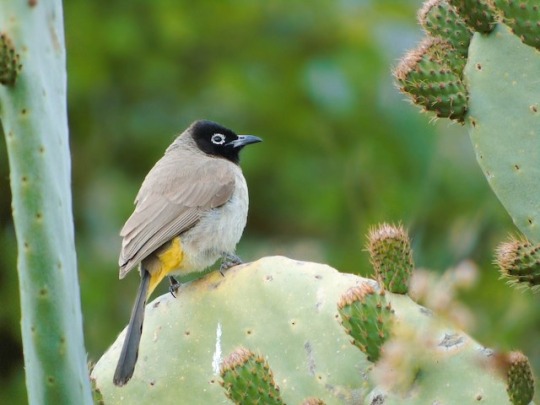
Usually referred to as just bulbul, this bisexual king is the roundest and my most favourite bird. IMPORTANT! BULBUL MEANS DICK! DO NOT TALK ABOUT YOUR LOVE FOR BULBULIM IN PUBLIC!
These birds are slightly larger then the house sparrow and are easily distinguished by their yellow butt. Their calls are reminiscent of frogs. They mate for life and are all bisexual and they cuddle each other. They are a menace to farmers because they are fond of fruit and tend to nibble just a little at a time. You can find them in all parts of Israel as long as there are nice trees nearby.
Eurasian blackbird/shakh-rur
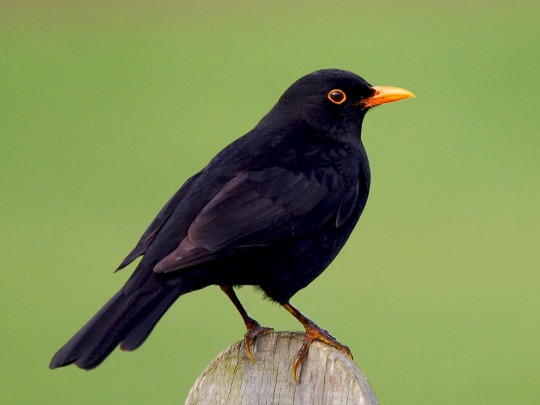
These timid birds like to hide in bushes and trees. Their calls are beautiful and I love them. They are smaller then a pigeon. The males are black and the females are brown. They feed on seeds, fruits and bugs, and use their beaks to search the ground for worms. You can find them in Jerusalem and the north, they like cool weather and don’t fuck with sand.
Great tit/yar-ge-zi ma-tzui

Life isn’t easy for these tiny psychopaths, which might be the reason they developed such a temper. Their Hebrew name translates to “angry one”, and for a reason. They are very aggressive towards other birds. They also feed on the brains of bats. You can distinguish between males and females by the thickness of the black stripe on their belly- males have a thicker one than females. They are most common to the north of Jerusalem, but you can find them in some parts of the desert.
Palestine sunbird/tzu-fit bo-he-ket

No, that’s not a hummingbird, it’s the sunbird! Despite their remarkable likeness they aren’t even a little related. Sunbirds feed on nectar and are pollinators! The males have black feathers that shine in the sunlight (which is how they got their name) and the females are a muddy grey, but they’re just as lovely. You can find them in all parts of Israel, especially near lush flowery areas!
White wagtail/nakh-li-e-li la-van
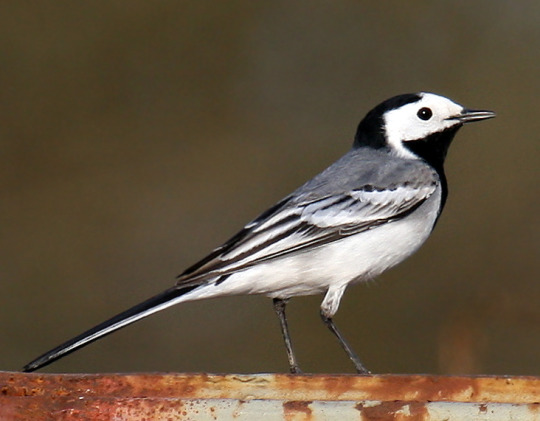
First migrant bird everyone!!! (Some blackbirds migrate here but some nest during summer so shhhh) This lovely round bird starts it’s visits around October and leaves when it gets hellishly warm again. Due to global warming the wagtails visits are shortening, so appreciate them while you can. Like their name suggests, the wagtails wag their tails. A lot. You can find them near water sources during the cold-ish months of the year!
Eurasian jay- or-va-ni shkhor ki-pa
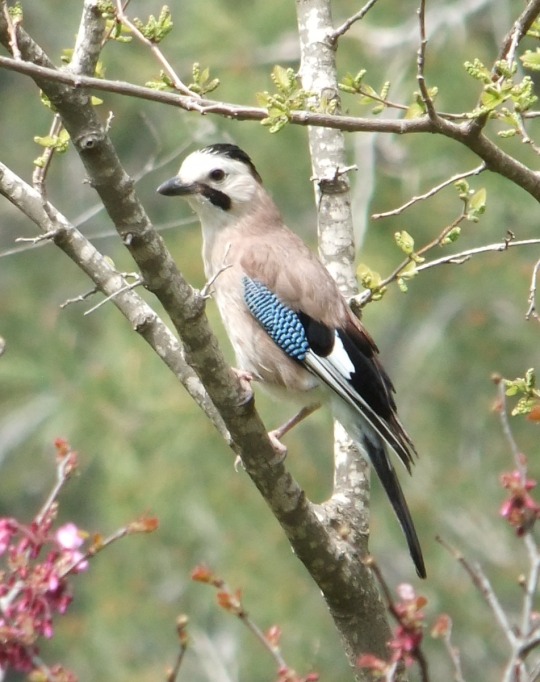
Eurasian jays can be found in other parts of the world, but I’m pretty sure the one we have in Israel is a different sub-species because the ones in Europe lack the beautiful black top that they’re named after.
The jay is a type of corvid, and in addition to being extremely social and intelligent, these birds can mimic other animals. Due to urbanisation, the jays learned to mimic car alarms, the ringing of phones and the cries of human babies. Jays are extremely fond of acorns, and burry them in the ground in preparation for harsher months. A single jay can remember between 4000 to 5000 hiding spots!
Syrian woodpecker/ na-kar su-ri

This picture is of a male woodpecker. The females have a completely black head. Woodpeckers can locate bugs that have burrowed inside trees and use their beak and long tongues to eat them, thereby helping the trees get rid of pests! Woodpeckers also love acorns, and compete with jays over them. To prevent concussions, the woodpecker’s tongue wraps around their brain, keeping it in place while they peck. You can find them in non-desert areas of Israel!
Lesser whitethroat/siv-khi to-kha-nim

Another migrant birds! These floofballs come here twice a year, once in spring and once in autum, although some whitethroats nest in the north all year long. During their migration you can find them everywhere in Israel, even in very urban areas! They get their Hebrew name, which roughly translates to miller’s shrubbery-liker, because their white chests look how a miller’s apron would look after a long hard day!
Super winged lapwing/sik-sak
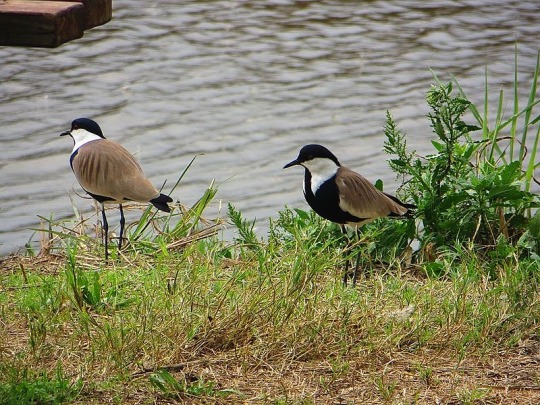
The siksaks are water birds with ridiculously long legs that they use to stab their prey. They kind of look like they are wearing a tux! Their original Hebrew name was “sharoni mezuyan”, which translates to “one that lives in the Sharon and is armed with a weapon” but also “fucking sharoni”. You can find them anywhere in Israel as long as there is a near enough water source.
White breasted kingfisher/shal-dag la-van kha-ze
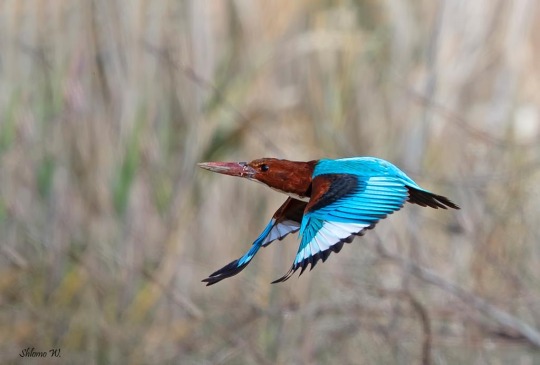
One of my favorite birds. The kingfisher is a magnificent bird of prey with brilliant blue feathers that always make my day. They are most common in the north and west of Israel, but they nest in smaller numbers in the south. They kingfisher’s diet consists of not only fish, but of crabs, frogs, slugs, bugs, and even the occasional rodent. Their varied diet helps them thrive even in drier areas.
169 notes
·
View notes
Text
Birds? In my Judaism?
It’s more likely than you think!
𓅯 ∴。 𓅨𓅪 ゚ * 𓅫 *
Quick disclaimer to say this is another post migrated from another platform and slightly updated.
𓅯 ∴。 𓅨𓅪 ゚ * 𓅫 *
As with many cultures, Jewish culture views and experiences many aspects of our world in ways that are unique and yet alike in ways to other cultures. the folklore surrounding birds is no exception.
🕊️ The Symbolism of Birds
In general, birds in Jewish culture symbolize freedom and grace because of the perceived ease and beauty of their flight, the soul and the innocence of the soul, motherhood, music, and Divine protection and presence.
Two types of bird, however, have their own prominent symbolism beyond what was listed above in Jewish culture: the dove and the eagle.
Doves symbolize purity, innocence, beauty, hope, rebirth (often being harbingers of spring), and love. Those familiar with the story of Noah and the ark may be familiar too with the presence of the dove in this tale:
𓅯 ∴。 𓅨𓅪 ゚ * 𓅫 *
”Then he sent out the dove to see whether the waters had decreased from the surface of the ground��The dove came back to him toward evening, and there in its bill was a plucked-off olive leaf! Then Noah knew that the waters had decreased on the earth.”
- Gen 8:8-8:11-
𓅯 ∴。 𓅨𓅪 ゚ * 𓅫 *
Some speculate that the dove in this portion is the symbolic representation of G-d making peace with Noah and thus humanity after the Great Flood.
Moreover, during the period in which the Temple still stood in Jerusalem, the rabbis considered doves to be suitable for sacrifice because they were a cheaper form of sacrifice when compared to herd animals, thus demonstrating modesty and simplicity, and because there is “none more persecuted than doves” — as such over time the dove came to symbolize the Jewish people as we were continuously persecuted by many throughout time.
Eagles, on the other hand, are symbols of power, victory, and royalty. Because of the speed of their flight, eagles are often associated with daily prayers as they swiftly deliver them to G-d.
𓅯 ∴。 𓅨𓅪 ゚ * 𓅫 *
”I bore you on eagles’ wings
and brought you to Me.”
-Ex. 19:4-
𓅯 ∴。 𓅨𓅪 ゚ * 𓅫 *
The above quotation from the book of Exodus demonstrates just one example of how eagles in Jewish culture signify freedom and salvation. However contrarily, eagles have also historically represented oppression as it was often a symbol used by those who tried to oppress us.
The eagle is also seen in the Mishnah as one of the embodiments that we must fulfil to perform the will of G-d:
𓅯 ∴。 𓅨𓅪 ゚ * 𓅫 *
”be as strong as a leopard,
as light as an eagle…”
-Pirkei Avot 5:23-
𓅯 ∴。 𓅨𓅪 ゚ * 𓅫 *
🕊 Significant Bird-Like Creatures and Concepts
Ziz Shaddai
One of the primordial monsters alongside Leviatan and Behemot in Jewish extra-biblical mythology, Ziz Shaddai is the King of the birds. according to tradition, Ziz Shaddai will be consumed at the Feast of the Righteous upon the arrival of haMeshiakh.
Created on the 5th day of creation with the rest of the birds, the Midrash Rabba describes Ziz Shaddai as a “kosher fowl, and while it spreads its wings, it hides the sun”. the Talmud has other various depictions of him though, ranging from a bird so tall that his head reaches the sky while his feet reach the floor of an ocean so deep it takes an axe over 7 years to reach its bottom. Ziz Shaddai is sometimes considered to be griffin-like.
Perhaps less menacingly, it is often believed that Ziz Shaddai protects his subjects, the other birds that are seen as weaker than him.
Milham
Described as a bird with the feet of a lion, the head of a crocodile, and as having 12 purple wings, not much information is known about this phoenix-like figure.
It is suggested that Milham refused to eat from the tree of knowledge of good and evil from the Garden of Eden, and as such was granted immortality in the city of Luz.
Shekhinah
The Shekhinah is not traditionally seen as a being on Her own, but is the primarily feminine depiction representative of the presence and dwelling of G-d within each of the Jewish people, connecting us most directly to the Divine.
Often imagined with wings, known as kanfei haShekhinah, G-d’s presence and dwelling within the Jewish people “shelters the people of Israel beneath these wings as a sign of loving-kindness and compassion.”
𓅯 ∴。 𓅨𓅪 ゚ * 𓅫 *
“As birds hovering, so will the Lord of Hosts protect Jerusalem”
-Isaiah 31:5-
𓅯 ∴。 𓅨𓅪 ゚ * 𓅫 *
Worth noting here that Tzipporah, Moses’ wife as mentioned in the Torah, is also linked to birds and protection. Firstly and most notably, her name means “bird” (from the Hebrew word tzippor). However, in Exodus, Tzipporah steps in to protect Moses from an attack by G-d (Exodus 4:24). While not directly related to the Shekhinah, we again see birds and protection being interlinked.
🕊Bird-Related Traditions and Customs
Rosh HaShannah and Yom Kippur
During the high holidays during which we celebrate the coming of the Jewish new year and a time of atonement and repentance, some families shape challah into the shape of birds to symbolize prayers of well-wishes or atonement to be carried to G-d.
Shabbat Shirah
The « Shabbat of Song » is the sabbath that coincides with the Torah portion called B’shalakh in Exodus 15. During this portion, we read what is known as Shirat HaYam, or the Song of the Sea, which is physically written out differently to make it stand out from the rest of the portion in the Torah.
On Shabbat Shirah, many Ashkenazi Jewish families have the custom to go out and feed birds in appreciation of their songs through which they are seen to be continuously praising G-d.
Kan Tzippor
Kan tzippor is one of the 613 mitzvot (commandments) listed in the Torah. The term kan tzippor itself translates to “bird nest”. This particular mitzvah explains that should one come across a nest on their journey, and should eggs or the young of a bird be in that nest with the mother, we must send off the mother before taking from the nest.
Though written rather literally, this mitzvah is providing common decency to the mother bird in the scenario that one must eat meat or eggs. in other words, if you must take an egg from a nest to feed yourself, make sure you are not suffering the mother to see it’s egg (or chick, fledgling, etc); we would not do such a thing to a human parent and child, so why would we suffer such a thing to an animal when it is providing us with nourishment*? in summary, we can relate this mitzvah to being kind and decent to animals, especially those that provide us with food. so important is this mitzvah that the Torah promises longevity should this mitzvah be fulfilled.
*this mitzvah is not stating that we just go around doing this willy-nilly, either. and, as with many of the 613 mitzvot, not all are ones that are obligatory in all circumstances. please remember as well the historical context in which the Torah was written and received and that this does not translate as literally into modern times.
Resources
Books
•Encyclopaedia of Jewish Symbols byEllen Frankel and Betsy Platkin Teutsch
Web Sources
• https://reformjudaism.org/shabbat-shirah
• https://beyondthegolem.wordpress.com/2011/01/02/its-a-bird/
• https://www.yeshiva.co/midrash/42839
• https://jwa.org/encyclopedia/article/zipporah-bible
22 notes
·
View notes
Text
Anderson’s Guide to the Birds of North America, Chapter 10: Magic
Summary: Fourteen scenes from the lives of Blaine Anderson, grad student and avid birder, and Kurt Hummel, clothing designer and Vogue writer, from before their first meeting during the COVID lockdowns of spring of 2020 through falling in love. Written for the Klaine Valentine’s Challenge 2025.
Also on AO3.
~~~
Chapter 10: Magic
With people being discouraged from taking public transportation except for work, Blaine hadn't had a chance to go to some of his favorite spring birding spots.
“I wish I could show you the salt marshes,” he told Kurt one day when they were walking through the neighborhood toward the nearby cemetery so that Kurt could practice using his “new” binoculars somewhere people wouldn't accuse him of looking in their windows (which, to be fair, he did do sometimes; he had given Blaine a very detailed description of the wallpaper in the living room of Mrs. Finkelstein from across the street—Blaine couldn't fault Kurt for looking, the design sounded so fascinating—as well as an adorable rundown of mispronounced book titles from the shelves of the Nordic literature professor who lived above her). “They attract such an incredible variety of birds. You could double your life list in an afternoon, I bet.”
“Considering that my life list is only around five birds right now, I expect to be doubling it today at the cemetery.”
“You've seen more than five different species since we met.”
“Yes, but I only started keeping track on eBird yesterday.”
Blaine laughed. “Good thing I've kept lists of all our neighborhood sightings. I'll share them with you when I get home and you can add them to your account.”
“So where are these mysterious salt marshes, anyway? They sound like something you’d find in the Outer Banks of North Carolina.”
“Yes, probably. But you can also find them here in New York City along the shore. There's an amazing one a few miles from here. It's got great birding even outside of the migration, because of all the different habitats there—water and reeds and a bit of coastal forest. But I haven't been able to get there this year for obvious reasons.”
“You don't have a bike?” Kurt asked.
“No. I never needed one. Transit got me everywhere I needed to go that I couldn't walk to.”
“Rachel and I both have bikes. I'm sure she'd let you borrow hers. And if she doesn't, I'll just steal it from her on a temporary basis.”
Blaine chuckled again. He loved the way Kurt made him laugh. He had almost forgotten how to do it in those first few weeks of lockdown. But now, whenever he was with Kurt, he found himself laughing all the time—because Kurt said something funny, or because everything they did together felt new and exciting, or because Blaine had so many joyful feelings that they bubbled out his nose in tiny puffs of air.
“I'd love that,” Blaine said. “And I’d be happy to give it a thorough dousing with bleach before I give it back to her.”
“You are such the consummate gentleman, Blaine Anderson,” Kurt said.
Blaine giggled.
There was promise in the air as they entered the cemetery. They were the only ones there but the birds, singing and chattering and calling their morning communications. Blaine could pick out cardinals and song sparrows amid the robins and housefinches. He pointed his binoculars through the gravestones toward a forsythia bush, trying to track down a chipping sparrow whose call he’d just heard.
“A yellow-rumped warbler!” Kurt gasped.
“Where!?”
Kurt was standing five paces away, his binoculars in front of his face and trained in Blaine’s direction. Blaine turned around to follow Kurt’s line of sight. “In that juniper?”
“No, no,” Kurt said. “It's right where you're standing. Look down.”
Blaine looked passed the hem of his yellow chinos toward his feet. He twisted to look behind his feet. He looked to his left, then to his right. “I don't see it.”
“Too bad. I'm getting a great view.”
Blaine looked over his shoulder again. He tried again to link the angle of the binoculars with some object.
“I never knew their rumps could be so shapely,” Kurt said, his voice unusually flirtatious for describing a bird.
Oh.
Heat rose to Blaine's face. Delight bubbled out of him yet again in the form of laughter.
Kurt was looking at Blaine’s ass—and enjoying the view.
“So I’m the yellow-rumped warbler, am I?” Blaine asked.
Kurt grinned. “The finest I've ever seen.”
#Anderson’s Guide to the Birds of North America#fic: Anderson’s Guide to the Birds of North America#wowbright writes fic#klaine fanfiction#klainevalentines2025#my klaine valentines
13 notes
·
View notes
Text



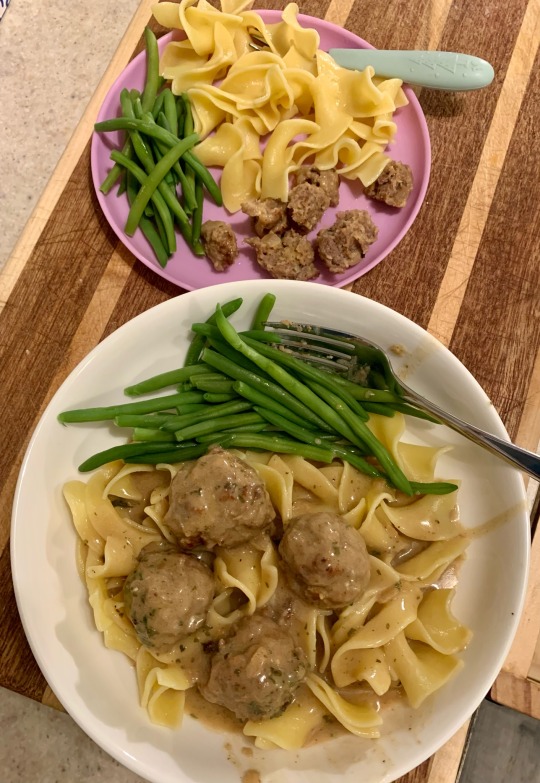

Home office views vs in-office views — not sure which ones I like better 😏
My home office has been decked out with some beautiful plants and a new accent rug. I just have to order & frame some photos for the wall above the couch and I think it’s about done. I’m loving this little space at home that’s just mine. Too, having the treadmill in my work space has transformed my daily habits. I’ve been working out a lot more than usual and eating much better as a result. If the scale could just budge a bit more, that’d be great.
This week I commuted into the office twice and it wasn’t as tough as I expected. I’m actually enjoying getting out of the house, having some quiet time to myself on the train, and interacting with my colleagues in person. Twice a week seems doable for now. It’s also nice wearing something other than leggings and a nursing tee. I really need to find some good bras though.
I’ve managed to wean my supply so that I don’t need to pump during the day but I still have plenty of milk for the baby at bedtime, overnight if needed, and in the morning. I didn’t think I would be able to accomplish that — when I was exclusively breastfeeding, it seemed crazy to think I could go all day without nursing/pumping and still have a supply at night — but here we are. The further along I get in my bf journey this time around, the more proud of myself I am.
Work has asked if I can travel internationally over the next few months and my gut instinct was to say yes, although I’m rethinking the breastfeeding aspect of that. I’m lucky that my boss is flexible and she wants me to do what’s best for me. So, I’m still mulling it over. We’ll see.
The kids are adjusting to me being away twice a week pretty well, better than anticipated. My MIL has been helping out whenever she’s not working — in the mornings Monday through Thursday and then Friday all day. No more big bumps in the road as far as she’s concerned. Fingers crossed it’s smoother sailing here on out. I’m still working on mending our somewhat strained relationship. It’ll take time.
The bird obsession continues to ramp up. Spring migration is almost upon us y’all, and I’m PUMPED. I was out back doing a happy dance while watching a flock of common grackles and red winged blackbirds in the yard the other morning. I guess this is life now? 🐦⬛🐦⬛😅
51 notes
·
View notes
Text


I found a vireo nest in one of my sampling plots yesterday while collecting soil cores. Yesterday was a trial but this little nest was a very bright spot.
We get tons of white-eyed vireos in my area, in the cross timbers and oak savannahs of North Texas. Vireos build their nests in the v of a branch like this, and I usually find them between 2 and 5-6 feet off the ground. They particularly like beauty berry shrubs (Callicarpa americana), and I often find a vireo nest near a Mexican plum tree (Prunus mexicana) although I'm not sure if they like them or if they just like the same habitats. The nests are extremely hard to spot in the growing season, but when the leaves drop in the fall, suddenly you'll find the empty nests and get to marvel at their beautiful construction. The vireos weave them using grass, spiderwebs, and moss. They look magical.
I hope that the babies that fledged from this nest, and the parents that built it and tended it, all made it safely south on their migration. Migrating song birds in this part of the US have to make a 500+ mile flight across the Gulf of Mexico during their migration. It's an insane feat that takes them 18 hours and many birds perish at sea from exhaustion. It's really critical for the birds to be in good health with healthy fat reserves to fuel them so that they can make it safely to land. These grasslands are healthy and hopefully provided everything the birds needed to make the trek, but habitat like this decreases every year. Wherever you are, fight to protect the nature around you so that it can support lives like vireos, the trees and shrubs that shelter them, the insects that feed them, the plants that feed those insects, and the soil that supports everything above it.
I hope that in the spring, these birds return and I can hear them singing in these savannahs again 💚
4 notes
·
View notes
Text
Big White Birds Day
Today's adventure was, I drove to the Wildlife Management Area to see the snow goose migration!
Every spring, flocks stop by our area on their way back to their summer homes in the arctic! These include vast numbers of snow geese, and smaller numbers of tundra swans. Dedicated birders come from far and wide to see them, and since the place is pretty near my house, I decided to go look at them.
This morning when I got up it was cold and I was very sleepy and I almost didn't go, but I'm glad I did! My pictures don't really do it justice, but here goes anyway.
Swans:
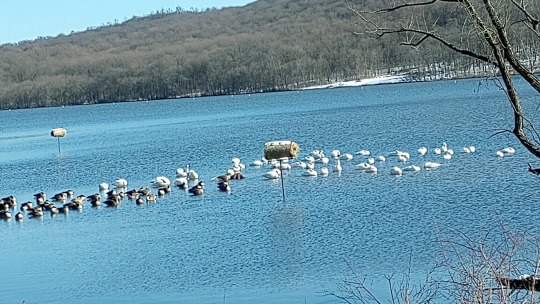
We started off with a drive around the lake, and saw this flock of swans resting near the shore. The smaller birds are the left are Canada geese, so if you're familiar with those, that gives you an idea of how big the swans are! They pretty much just hung out there the whole time I watched; every now and then one would stretch out its neck a bit and get comfy again.
Then I drove to the Willow Point parking lot, which is Snow Goose Migration Central. There were maybe eight or so cars there, in early afternoon on a Wednesday--the best times for Snow Goose viewings are dawn and dusk, and of course the weekends are very busy. They had a whole row of a dozen extra port-a-potties in for the Snow Goose crowds.
From the parking lot, you walk about half a mile to the viewing spot, along this nice paved trail:

The viewing spot has a pavilion and some benches, and--on this day--eight or ten well-bundled-up senior citizens, who have settled in for long-term viewing with their binoculars and tripods, and a rotating cast of other visitors like me, with dogs and strollers and such, who have stopped by to see what all the fuss is about.
The official count this morning, apparently, was 23,000 snow geese (along with 105 tundra swans, and some Canada geese). During the day, the giant flocks break up and smaller groups fly off to look for places to eat, but some stick around. So this is the small, partial flock that was on the water this afternoon:

Here's a group that was off feeding, coming back in to join the main flock:

They approached in in a somewhat-disorganized-but-recognizable version of the classic V formation, but then scattered as they got close, with the returnees filling in seemingly wherever there was a free spot amid the flock.
A little while later, something really neat happened, which was that something spooked them, and the whole flock took off and swirled around for a few moments--I didn't try to get any pictures of it, because I knew they wouldn't turn out, and I wanted to see it. They took off in a body, like you'll see flocks of starlings doing from a field, and there was a sound like a rainstorm on a tin roof, from all of their wings going at once. They came right at us, in the viewing area, and passed overhead, and wheeled over the lake for a turn or two, before settling down again a little to the left of where they started:

I didn't get the necessary landmarks in the picture to make it obvious, but basically now the rightmost edge of the flock is about where the leftmost edge was before they all got up and moved.
A little while later, it looked like they were getting ready to do it again, and I got this picture:
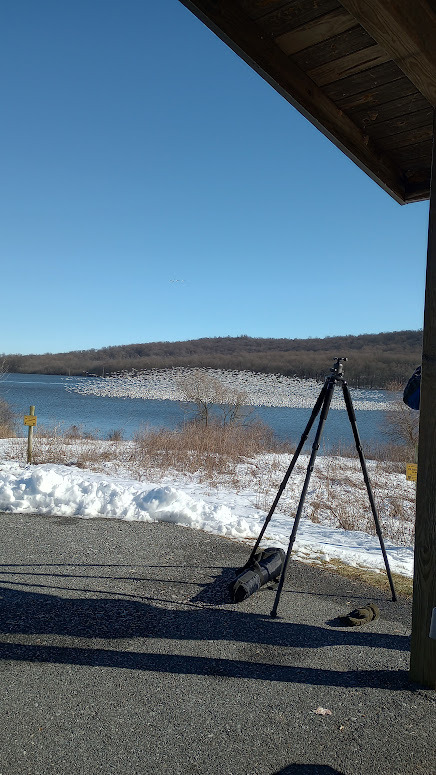
But they only a fraction of the flock took off that time--maybe a quarter?--and when the rest didn't follow suit, they all landed again, shifting the overall flock a little bit back to the right.
This tree across the lake had a Bald Eagle in it:
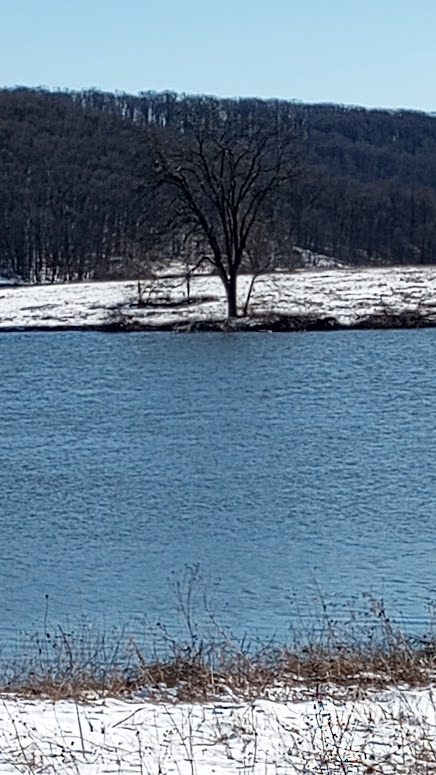
Which the birders suggested was probably what had the geese all riled up. After a bit more watching, I decided I was cold enough--and I wasn't going to see anything to top what I already had--and started back to the car. While I was walking back, I heard the flock take off again, and from that distance, it sounded like a waterfall.
8 notes
·
View notes
Text

Daily Devotionals for October 10, 2024
Proverbs: God's Wisdom for Daily Living
Devotional Scripture:
Proverbs 26:2 (KJV): 2 As the bird by wandering, as the swallow by flying, so the curse causeless shall not come. Proverbs 26:2 (AMP): 2 Like the sparrow in her wandering, like the swallow in her flying, so the causeless curse does not alight.
Thought for the Day
This verse tells us that the curses that come to someone's life are not by accident; there is a reason behind them. What is a curse? Today, we think of "cursing" as using foul language, profanity, or perhaps, even blasphemous words against God. Our definition usually is synonymous with "swearing." This is a form of cursing, but it is only a small portion of what "curses" mean in the Bible. Cursing in the Bible is not only speaking evil of someone, but evil coming upon someone. If a person is under a curse, according to the Bible, evil has come upon them in some way. Sickness, tragedy, or bad circumstances are occurring in their lives.
There is a reason behind every evil that comes against us, just as there is a reason that birds migrate south in winter and north in the summer. It has long been a mystery as to why the swallows return to certain places each year, like the migration of the swallows to San Juan Capistrano, California. The incredible flight of the swallows happens every spring around the 19th of March to the old Spanish mission located there. Most scientists cannot explain the migration of birds other than to say that it is just a fulfillment of some inner biological destiny. The Bible tells us that God is the one who created the birds and has made them like they are. Therefore, it is God who set up the spiritual laws of cause and effect. When we break them, we reap what we sow. Curses come because of broken spiritual laws. We may not be aware of why some curse or evil has come upon us, but there is a reason. As we seek God for the answer, He will give us the revelation as to not only why, but also the remedy for it.
In today's culture, some Christians have curses operating against them. That is because various occult practices are openly practiced in our societies. Christians need to be freed from curses spoken against them before they were saved, or from curses that have come upon them through involvement in idolatry and witchcraft (Deuteronomy 29:24-28).
Curses can work against Christians if they are in rebellion, out of the will of God, or not walking in faith and love. However, if we are walking where God wants us to walk, a hundred curses against us would just bounce off and would do us no harm. If we have been affected by a curse, the good news is that by accepting Jesus, we can be free from demonic oppression and actually have authority over the devil and his curses, instead of his spirits having power over us and our family. "Behold, I give unto you power to tread on serpents and scorpions, and over all the power of the enemy: and nothing shall by any means hurt you" (Luke 10:19).
The story of Balaam and Israel gives us a good example of this principle (Numbers 22). Although Balaam was not an Israelite, he was a prophet of God. The kings of Moab and Midian wanted him to curse the Israelites during the journey from Egypt to Canaan. Elders of those nations offered him what apparently was a lot of money, and he tried to do what their king wanted, but he could not curse them. He tried three times but was unable to do anything, but bless Israel. "How shall I curse, whom God hath not cursed? or how shall I defy, whom the LORD hath not defied?" (Numbers 23:8).
Before we are born again, we walk under the law of sin and death; but, after we are regenerated, we are under the law of life in Christ Jesus, who took the curse for us. "For the law of the Spirit of life in Christ Jesus hath made me free from the law of sin and death" (Romans 8:2). "Christ hath redeemed us from the curse of the law, being made a curse for us: for it is written, Cursed is every one that hangeth on a tree: That the blessing of Abraham might come on the Gentiles through Jesus Christ; that we might receive the promise of the Spirit through faith" (Galatians 3:13-14).
How wonderful is our inheritance as Christians! We do not get the evil that should be ours. We all deserve hell, but when we come to Jesus, we get Heaven. We are not under the curse of sickness and death any longer. We now have power over sin through Jesus. The way to break a curse is to repent for whatever involvement has occurred on the enemy's territory and rebuke him from our life.
Prayer Devotional for the Day
Dear heavenly Father, I ask You first to forgive me for my sins and cleanse me from any area where I have allowed the devil to enter my life. I renounce any involvement with the works of darkness. In the name of Jesus, I now cancel every curse, and Father, I ask You to forgive the people who have spoken them against me. I thank you that those curses will no longer operate against me. In Jesus' name, they are broken right now, by the power of Almighty God. I cancel every evil that was spoken against me and ask You to cover me and my family with Your protection according to Your Word in Psalm 91. I ask this is the name of Jesus. Amen.
3 notes
·
View notes
Text
Snow Moon - February 23-24, 2024

Boots and mittens on, witches - it's time for the Snow Moon!
Snow Moon
The Snow Moon is the name given to the full moon which occurs during the month of February. Despite what certain groundhogs will tell you, February is the month that sees the highest rates of snowfall across much of North America, according to the National Weather Service, and many alternative names for the moon and the month in which it falls reflect this.
As with many full moon names, we find the roots of the Snow Moon among the indigenous peoples of North America. In this particular case, a colonist explorer noted in 1760 that the Naudowessie (Dakota) people called this month Snow Moon specifically due to the tendency for snowstorms to come during that month. Some other indigenous names for this moon and month refer to commonly-sighted animals. Some examples include Eagle Moon (Cree), Bear Moon (Ojibwe), Groundhog Moon (Algonquin), and Goose Moon (Haida). Another notable example is Hungry Moon (Cherokee), denoting the scarcity of available food in deep winter.
The Snow Moon this year is what is known as a "micromoon" - basically the opposite of a supermoon. Where a supermoon brings our beloved satellite closer to Earth, at the perigree (or zenith) of its' elliptical orbit, a micromoon is at the apogee (or nadir), placing the moon at a point comparatively farther away. The moon will be at peak illumination at 7:30am EST on February 24th, meaning the moon may appear to be full on the 23rd and the 24th, depending on where you live.
What Does It Mean For Witches?
February is a month of change and transition. Though winter still holds on, many places may be showing early signs of spring. Little buds may be coming out on the trees, certain species of birds are beginning to migrate back, and hibernating animals start to wake up and reappear.
As we begin to turn toward the end of our long winter's rest, it's a good time to think about how we prepare for oncoming change and how we care for ourselves and our practices during times of stagnation.
With the moon in apogee, we might also contemplate the concept of distance as it relates to our practices, be it keeping long-distance bonds fresh, doing things remotely either alone or as part of a larger group, or feeling distant from your craft or your deities. And yes, such things are normal and cyclical. Our inspiration and motivation wax and wane just as the moon does. If it feels like you've been far away from your craft for too long, perhaps it's time to bring it back into your orbit.
What Witchy Things Can We Do?
Gather fresh snow or icicles for moon water, or make your own moon ice by leaving a bowl of water out overnight to freeze, if the temperature drops low enough.
If it snows in your area, you can wish upon a snowball. Grab a handful of powdery snow, whisper your wish to it, and throw the whole thing up in the air to release the wish into the universe
With winter scarcity in mind, practice creating a minimalist spell as an exercise. Create a workable spell with as few components, words, movements, or ritual elements as possible. This is more of a challenge if you're used to using material components or rituals in your spellwork. Many witches cast spells with focused thought or energy work alone.
Explore the concept of self care as magic. Use your routines to create moments of rest and harmony, make a point of being kind to your body and your mind, and cultivate a more positive relationship with yourself - it's the only one guaranteed to last a lifetime.
Connect with your local biome by looking for any early signs of spring in your area. Feed the returning birds and identify the plant and animal species you see around you as they appear one by one.
Happy Snow Moon, witches! 🌕❄️
SOURCES & FURTHER READING:
Bree’s Lunar Calendar Series
Bree’s Secular Celebrations Series
Snow Moon: Full Moon in February 2024, The Old Farmer's Almanac.
Snow Moon: The Extraordinary Full Moon of February 2024, The Peculiar Brunette.
Moon Info - Full Moon Dates for 2024
Calendar-12 - 2024 Moon Phases
Everyday Moon Magic: Spells & Rituals for Abundant Living, Dorothy Morrison, Llewellyn Publications, 2004.
(If you’re enjoying my content, please feel free to drop a little something in the tip jar, check out my monthly show Hex Positive, and find my published works on Amazon or in the Willow Wings Witch Shop. 😊)
#witchcraft#witchblr#witch community#baby witch#witch tips#lunar magic#moon magic#full moon#snow moon#pagan#lunar calendar
202 notes
·
View notes
Text
Window strikes are an issue in almost every major U.S. city. Birds don’t see clear or reflective glass and don’t understand it’s a lethal barrier. When they see plants or bushes through windows or reflected in them, they head for them, killing themselves in the process. Birds that migrate at night, like sparrows and warblers, rely on the stars to navigate. Bright lights from buildings both attract and confuse them, leading to window strikes or birds flying around the lights until they die from exhaustion — a phenomenon known as fatal light attraction. In 2017, for example, almost 400 passerines became disoriented in a Galveston, Texas, skyscraper’s floodlights and died in collisions with windows. “Unfortunately, it is really common,” said Matt Igleski, executive director of the Chicago Audubon Society. “We see this in pretty much every major city during spring and fall migration. This (the window strikes at McCormick Place) was a very catastrophic single event, but when you add it all up (across the country), it’s always like that.” [...] Window strikes and fatal light attraction are easily preventable, said Anna Pidgeon, an avian ecologist at the University of Wisconsin-Madison. Building managers can simply dim their lights, she said, and architects can design windows with markings in the glass that birds can easily recognize. People can add screens, paint their windows or apply decals to the glass as well. New York City has taken to shutting off the twin beams of light symbolizing the World Trade Center for periods of time during its annual Sept. 11 memorial ceremony to prevent birds from becoming trapped in the light shafts. The National Audubon Society launched a program in 1999 called Lights Out, an effort to encourage urban centers to turn off or dim lights during migration months. Nearly 50 U.S. and Canadian cities have joined the movement, including Toronto, New York, Boston, San Diego, Dallas and Miami. Chicago also participates in the Lights Out program. The city council in 2020 passed an ordinance requiring bird safety measures in new buildings but has yet to implement the requirements. The first buildings at McCormick Place were constructed in 1959.
10 notes
·
View notes
Text

Weather affects rates of mass gain in migratory birds during stopover
During migration, birds use stopover sites to replenish their fat reserves, which serve as energy stores. Weather affects food availability and foraging conditions, which in turn affects the rate at which they can refuel.
sing 10 years of data collected from Iona Island Bird Observatory, we found that birds gain mass more quickly with increasing temperatures, but they gain mass more slowly with increasing precipitation. These effects vary between bird species and between seasons: weather effects are stronger in spring than fall and in insectivorous warblers compared to more generalist sparrows.
Our results suggest that with changes in weather due to climate change, insectivores may be more sensitive than birds with more generalist diets like sparrows.
Iona Island is an important stopover site for migratory songbirds
Every Spring and Fall thousands of songbirds pass through Iona Beach Regional Park on their way to or from their northern breeding grounds.
Data from 10 years (2010-2019) of migration monitoring at Iona Island Bird Observatory (IIBO) shows that birds who stay longer at Iona are able to gain more fuel for the next leg of their journey.
Our results show that Iona Island provides important stopover habitat for migratory songbirds. Continued monitoring efforts at IIBO will help us understand how anthropogenic changes to Iona Island affect migratory birds.
The data from IIBO show that long-distance migrants tend to accumulate fat faster at Iona than short-distance migrants.
Birds also gain fat faster in the spring than the fall. Spring migrants are under pressure to arrive at their breeding grounds early and secure better territory
I made this infographic summarizing the results of DeZwaan et al. 2022. The paper was the result of analyzing 10 years worth of migration monitoring data collected at the Iona Island Bird Observatory in Richmond, BC. Thanks to Devin for leading this paper, and including me both as a coauthor and to Andrew for hiring me to make the infographic. https://academic.oup.com/auk/article/139/4/ukac027/6609548
#ornithology#sciart#science#scientific illustration#birds#birding#migration#ecology#conservation#wildlife#WildResearch#IIBO#bird banding
5 notes
·
View notes
Note
Hi hi! If you have time would you mind sharing how you got involved with the bird ringing/tracking stuff? I really want to do something similar but don’t know how to get started. I’ve volunteered for a group that does walks to collect birds who have hit buildings during migration season, and I have a biology degree but I’m not an ornithologist by training. Is it possible for someone like me to get involved with the kind of thing you’re doing? Thank you!!
Sure, no problem.
I have been a member of a bird protection organisation for a couple of years and met an active member and we instantly became friends. Since he’s a licensed bird ringer and helps in ringing schemes for multiple ornithological institutes, he took me under his wing and taught me most of what I know now. I’ll get my own license in spring, but I’ll probably still continue to help him and some other bird ringers since equipment is kind of expensive and I have sooo much to learn before starting a project of my own…
If you want to get started, I’d suggest asking your nearest ornithological institute or bird protection centre about local bird ringers and reaching out to them. Obviously I was kinda lucky to find the perfect guardian ringer instantly, but in my experience most ringers are old / aging / are glad to find an assistant, since it’s a lot of work and it can get lonely. Just be warned, most are kinda peculiar about their own system of doing things 🙃
Feel free to dm me and have a chat <3
5 notes
·
View notes
Text
Week 2: Ideal Role
Prompt: Describe your ideal role of environmental interpreter. What might it entail? Where might it be? What skills might you need?
Hello again everyone,
I hope everyone has been doing well! I’ve been quite busy but doing a lot of good work! <3
When I used to hear “nature interpreter”, I honestly never really knew much about what it meant. I thought, “why would nature need an interpreter? It doesn’t speak.” Over the years, I have of course learnt that it in fact does. A nature interpreter is someone who, like a language interpreter, is a link between two different worlds, allowing us a glimpse into something we may not have been able to know beforehand. Nature does not speak but instead shows us what it wants to say, and their job is to tell everyone else about it. For example, interpreters get to show others the beauty of nature through behaviours of animals. Sometimes there may be a flock of birds “mobbing” (a bunch of smaller birds annoying and attacking other larger birds) which means that these larger birds, usually birds of prey, are in the area. This can be great for people who would want to see these species, or even just people who enjoy nature as a whole.
My ideal role of being an interpreter would entail a focus on birds- my absolute favourites! I have always been a huge bird nerd, although I do enjoy many other aspects of nature! I already do a lot of work with interpreters to set up guided birding walks through the club I have been helping to run for the last little while, so I know about what it entails.
My dream walk would likely be either something somewhere across the world travelling and leading birding walks, or in the province where I would take people to one of the large provincial parks that are under the atlantic and/or mississippi flyways such as Point Pelee provincial park during peak spring migration. I am always a little bit more biased towards the spring as you get to see birds out of their wintering plumages covered in the bright colours they are known for. Along with this, Point Pelee is home to one of my favourite warblers, the protonotary. Canada is believed to only have around ~30 breeding pairs left so it’s a truly special palace to be able to see them. Along with this, it’s an incredibly important place to many birders as hundreds of people flock (pun intended!) to see some birds they may never have seen otherwise as they migrate.
I would love to be able to host a nice tour with a smaller group where we can all learn from each other and I would love to teach them everything I know about birds. I would need a bit more skill with my bird calls, as they are definitely my weakest spot. Knowing calls is really important, but I find it to be quite hard sometimes! I would also need to know the routes and find lists of birds that commonly are found there, as well as potential migratory fallouts that could appear. I really hope that one day I may be able to do this!
2 notes
·
View notes